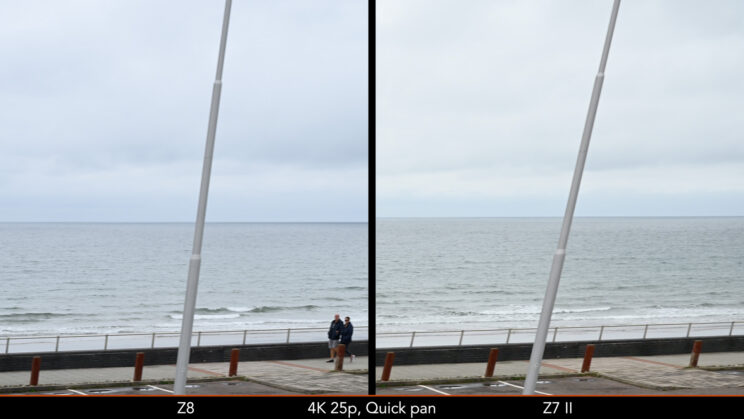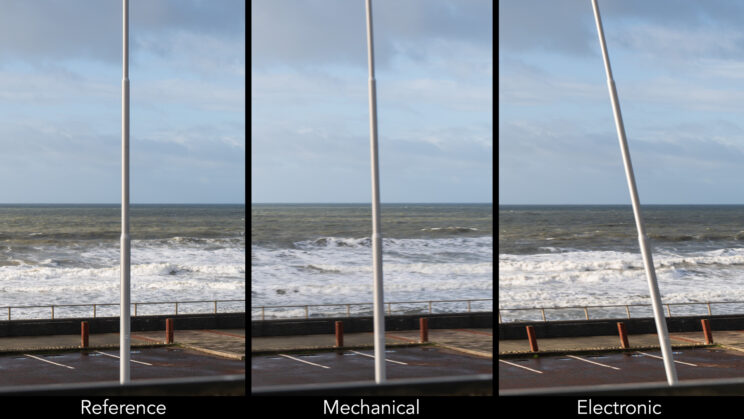If we examine the initial reports and hands-on reviews of the Sony A9 Mark III, which was announced in November 2023, terms like ‘game changer,’ ‘revolution,’ and phrases such as ‘photography will change forever’ dominate the front pages. The reason for such hype is that the new E-mount model is the first camera to feature a global shutter sensor.
In this article, I’m going to explain what that means and why it is an important step in the evolution of mirrorless cameras.
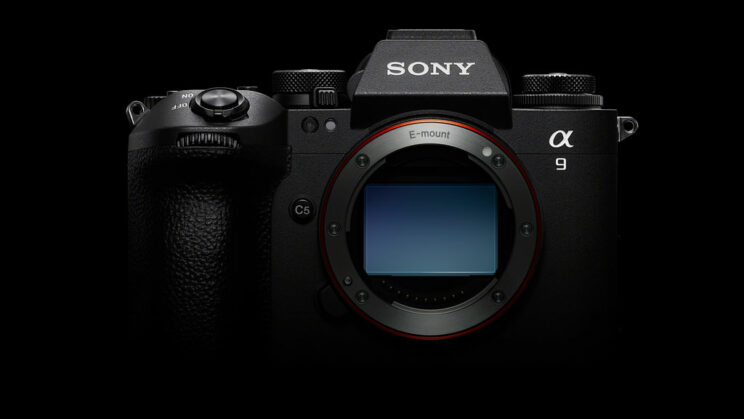
Rolling Shutter
Terms like rolling shutter, mechanical shutter, and electronic shutter are common in photography magazines and websites, but due to the complexity of modern digital sensors, explaining the whole picture can be a bit challenging. Let’s begin with some basics.
All mirrorless cameras, as well as DSLRs and most video/cinema cameras, are equipped with a rolling shutter sensor. As the term ‘rolling’ suggests, this type of sensor reads the pixels one row at a time, typically from top to bottom.
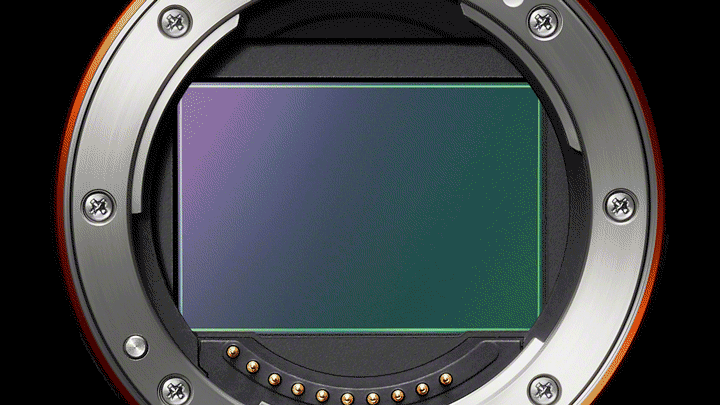
The amount of time it takes to scan the entire sensor is known as the ‘readout speed,’ which depends on the sensor’s technical design, its size and the camera’s internal processor.
For instance, stacked sensors, found in recent high-end cameras like the Sony A1, Nikon Z9, Canon R3, and more affordable options like the Fujifilm X-H2S and OM System OM-1, allow for very fast readout speed. Consequently, the time it takes for these cameras to read all the pixels from top to bottom is shorter than others that rely on a more traditional sensor design.
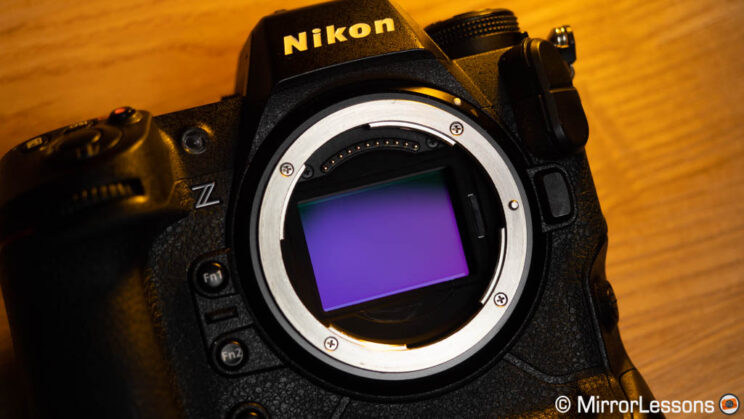
You’ve likely heard of rolling shutter because of the artifacts that can appear when recording videos, or taking photos using the electronic shutter mode of your camera. Since the pixels are not read simultaneously, the upper part of your photograph is recorded a fraction of a second ahead of the lower portion. If you’re capturing a fast-moving object within your frame, you may encounter distortion because the upper and lower parts of that object are read at slightly different times.
The example I use for my tests is a quick panning shot of a scene containing a lamppost in the middle. As you can see, the lamppost becomes distorted, and the degree of distortion is influenced by the readout speed. The image below illustrates the difference between the Nikon Z8 (with a stacked sensor and fast readout speed) and the Z7 II (featuring a non-stacked sensor and slower readout speed).
Distortion can be subtle and may not be immediately noticeable, depending on the nature of the elements within your frame, the speed at which you’re panning with the camera, or how fast your subject moves inside the scene.
Here is another example showcasing a richer composition with trees, tall grass, and a red kite in flight. It’s difficult to discern any potential distortion on the bird, or in the leaves and grass, as they could simply be swayed by the wind. However, when focusing on the man-made structure in the background, you’ll notice that it isn’t perfectly straight.
Another well-known limitation of rolling shutter sensors is banding when working under certain types of artificial light sources, such as LEDs that can flicker, causing constant changes in brightness. This flickering is often imperceptible to the naked eye, but it’s there and can occur faster than the time it takes for the sensor to complete its scan to capture the photograph. As a result, darker lines may be visible in your image.
Sometimes they are very apparent, while other times they are quite subtle, depending on the specific lighting conditions and the sensor readout speed.
Another example related to this issue is the presence of LED panels in sports venues, which often present challenges for sports photographers, as Mark Pain explains in his interview with DPReview.
Mechanical and Electronic Rolling Shutter
Associated with the rolling shutter sensor are three modes you can select in most cameras nowadays:
- Mechanical Shutter
- Electronic Shutter
- Electronic-First Curtain Shutter (EFCS)
The mechanical shutter, which has been used for over a century, is still widely available on cameras today. It operates with two mechanical curtains that open and close in front of the sensor, exposing the pixels for the duration you’ve selected (your shutter speed). In older film cameras, the two curtains would open and close to expose the film.
The electronic shutter works on the same principle. However, instead of relying on physical curtains, the camera powers the pixels one row at a time to start the exposure, and switches the pixels off one row at a time to end the exposure, mimicking the same movement of the mechanical curtains going up and down. The electronic shutter is widely used not only in mirrorless cameras and recent DSLRs (Live View mode) but also in products where there are no physical curtains, such as smartphones and video cameras.
In photography, the advantage of the electronic shutter over the mechanical shutter is that it doesn’t require physical moving parts; therefore, you can exceed the shutter speed limit of 1/8,000s all the way to 1/32,000s (the average you see today). Similarly, the continuous shooting speed goes beyond the 10/12/15 fps figures you find with mechanical shutters, reaching 20fps, 40fps, 60fps, or even 120fps depending on the specific model.
The EFCS (Electronic Front Curtain Shutter) is a hybrid solution: the first curtain is electronic, where the pixels are powered one row after the other to start the exposure, and the second curtain is mechanical, moving up to cover the sensor and terminate the exposure. It is found as an option in most prosumer and high-end cameras, mainly to avoid shutter shock, but it is often the only ‘mechanical solution’ in lower-end models.
At this point, it’s important to understand that whether you select the mechanical, EFCS, or electronic shutter on your camera, the sensor works in the same way: pixels are read one row at a time because it’s a rolling shutter sensor.
This may prompt you to ask: why are we talking about rolling shutter artifacts (distortion, banding) only with the electronic shutter? Why doesn’t it happen with the mechanical shutter as well, since the sensor is the same and works in the same way? The answer is that it still occurs with the mechanical shutter, but it is less noticeable.
If we consider the distortion example with quick panning, the reason the effect is less pronounced with a mechanical shutter is that the movements of the two physical curtains are faster than the time it takes for the electronic shutter to start and close the exposure (i.e., to power and un-power the pixels). As a result, a mechanical shutter cuts off the light more rapidly. This becomes even more significant with a fast shutter speed when the sensor is never fully exposed to the light.
Here is another example featuring the lamppost: you may notice a slight distortion with the mechanical shutter, but it’s notably more pronounced in the photo captured using the electronic shutter. I did the test with the Sony A7 IV, which has a slower sensor readout speed than the A1 or Z8. The shutter speed was 1/2000s.



Global Shutter
The key point of all that I’ve explained above is that, regardless of how fast the readout of a rolling shutter sensor is, or how fast the mechanical curtains move, there is still a progressive process to initiate and conclude the exposure. The upper part of your photograph is recorded a fraction of a second ahead of the lower portion. We’ve coped with this just fine all these years, but technology evolves, and now it’s time for the next chapter: global shutter.
The global shutter sensor is fully electronic, but the difference is that it reads all the pixels simultaneously. There is no progression from top to bottom to read the whole area. Everything happens instantaneously, eliminating the sequential process for creating the image.
At this point, mechanical curtains become completely redundant; they don’t serve any purpose anymore. That is why the A9 III doesn’t have any. The only physical element you will find is a shield that covers the sensor when the camera is turned off, which is useful for changing lenses without the risk of small particles of dust getting inside.
The advantage of the global shutter now becomes apparent: distortion with fast movements becomes a thing of the past, and banding with artificial light and LED panels becomes a thing of the past, for both stills and video.
The next question is: why now? What prevented global shutters from making their way into digital cameras earlier?
While it is true that global shutters have existed for a long time, they were mainly used for industrial applications and high-end, very expensive cinema cameras. Recently, more affordable products like the Red Komodo 6K and the Z CAM E2-S6G have emerged (both averaging around $6000 for the body only).
Another set of reasons why global shutter sensors were not implemented earlier is that they require more power, and their circuitry is more complex, taking up space in each pixel and limiting image quality factors such as dynamic range.
Today, it seems like Sony has found the optimal combination thanks to the stacked sensor design: there is more space for each photodiode, as the circuitry is moved to another layer, and that also helps to increase processing speed, combined with the latest generation image processor.
The jury is still out on whether the A9 III exhibits more restricted image quality when compared to rolling shutter sensors with the same megapixel count (24MP).
A glance at the specifications reveals a narrower ISO range, starting from the unusual base of ISO 250 instead of the standard 100 ISO. While it may not claim the title of the absolute best full-frame sensor on the market, it’s reasonable to assume that Sony waited until the results were satisfactory for professional use. Over the last decade, the company has earned quite the reputation for delivering exceptional image quality through its sensors, and it’s unlikely they would risk to compromise that reputation now.
Flash
There’s one aspect I haven’t discussed yet, and that’s the use of flash, which I believe deserves its own dedicated section.
The global shutter in the A9 III has received praise for its ability to enhance performance in flash photography. To understand why, let’s begin by explaining what happens with a conventional rolling shutter (mechanical or electronic).
You might have come across the term “flash sync speed,” which typically falls between 1/200s or 1/250s. This represents the maximum shutter speed at which a single flash can evenly illuminate the entire sensor surface. If you use a faster shutter speed, the second curtain will begin closing to end the exposure while the first curtain hasn’t finished opening, preventing the sensor from being fully uncovered.


This is where High-Speed Sync (HSS) comes into play to overcome this limitation. Instead of a single flash, the unit emits multiple rapid bursts of light (often at reduced power) to ensure that every part of the sensor receives illumination, although this occurs progressively.

Thanks to the simultaneous readout of all pixels on the sensor and the absence of curtains, the A9 III doesn’t have this limitation. With its global shutter, it can sync flash at any speed, without the need for HSS. Sony claims it can sync up to 1/80,000s, matching the camera’s maximum shutter speed (when using an aperture smaller than f/1.8).
At this point, I guess the only limitation would be the speed of your flash itself. For example, the Profoto A10 on-camera flash has a minimum duration of 1/20,000s, while the top-of-the-line Profoto Pro 10 Studio light can reach 1/80,000s. Sony stated that its F46RM and F60RM2 on-camera flashes will be able to sync at the fastest speed after a firmware update, though it will most likely result in a loss of power.
A similar argument could be made for how fast your light can refresh (and not overheat) while trying to keep up with the maximum continuous shooting speed of 120fps.
Conclusion
There could be more things to talk about, or we could go more in-depth from a technical point of view, but I wanted to keep an easy level of reading and, truth to be told, I’m not an engineer, so if I wanted to dig further, I would be better off hire someone that has more knowledge than myself.
Hopefully, what I wrote has been enough to explain what a global shutter is, how it differs from the other type of sensor and why it is an important step forward. The ability to permanently address issues such as distortion and flickering is a remarkable advantage, particularly for videographers. The additional capabilities it brings to flash photography as well as the extra speed will be warmly received by those who can harness their full potential.
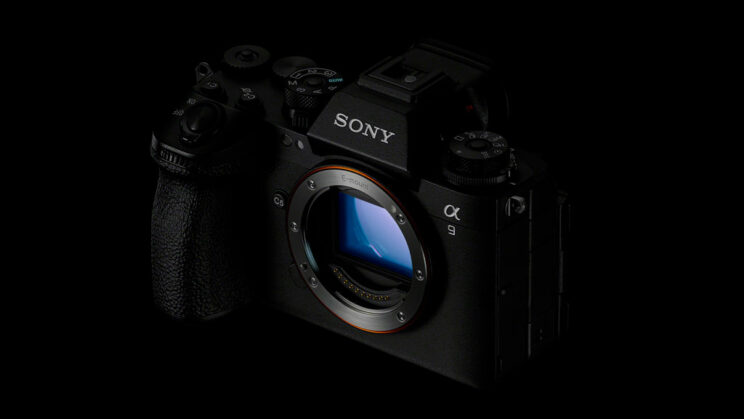
The A9 III marks the beginning of this evolution, but for the time being, it caters to a select audience rather than the masses. It remains an expensive camera that may be challenging to justify for non-professionals, given that its primary focus is on serving news agencies and sports photographers.
Perhaps it would be more “game changing” if it was accessible to everybody, but it’s difficult to predict whether global shutter will find its way into prosumer cameras like an A7 IV, or even a lower model like an A6700. These sensors are more expensive to produce, and companies might prefer to reserve their state-of-the-art hardware for flagship models.
Credit is certainly due to Sony for their bold leadership in implementing this technology now, especially when other aspects like resolution and ISO sensitivity were becoming somewhat predictable headlines. I’m sure we will see other mirrorless cameras adopting global shutter in the future and I wouldn’t be surprise if someone else is already working on it.

